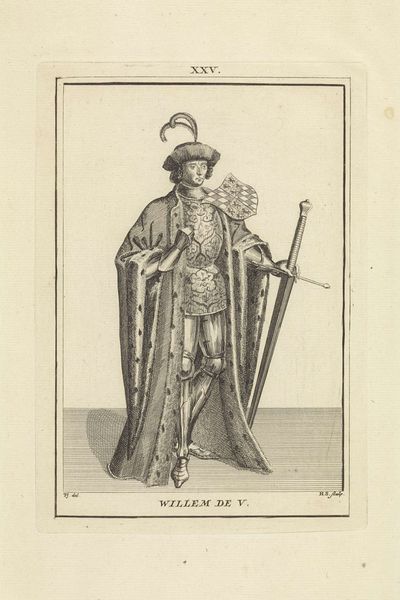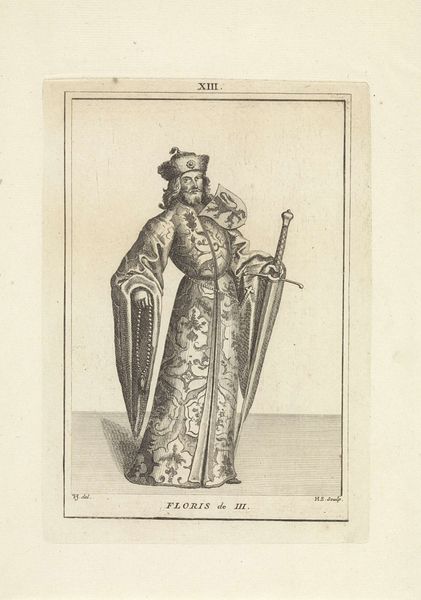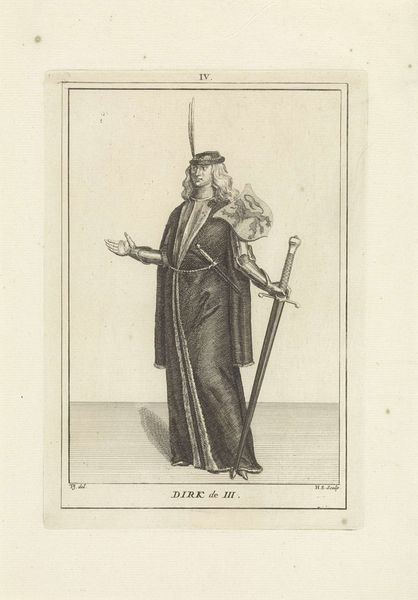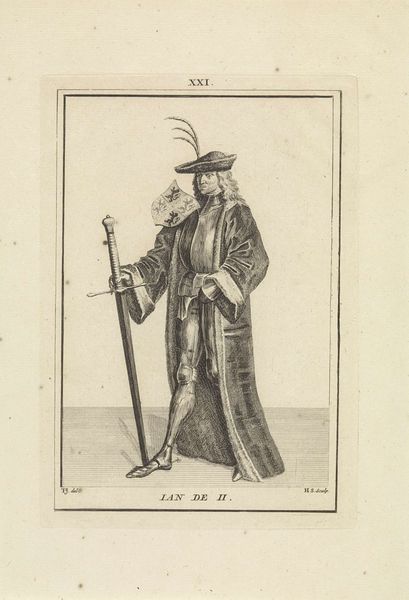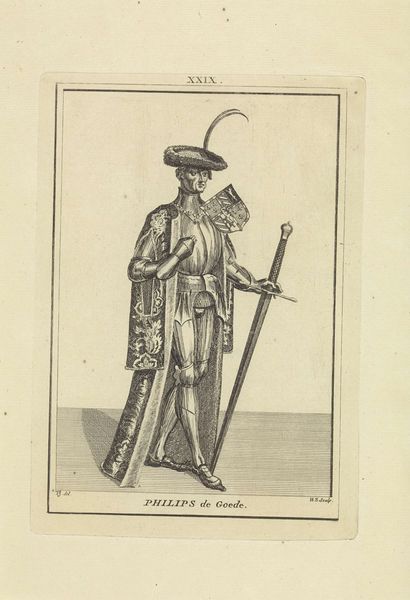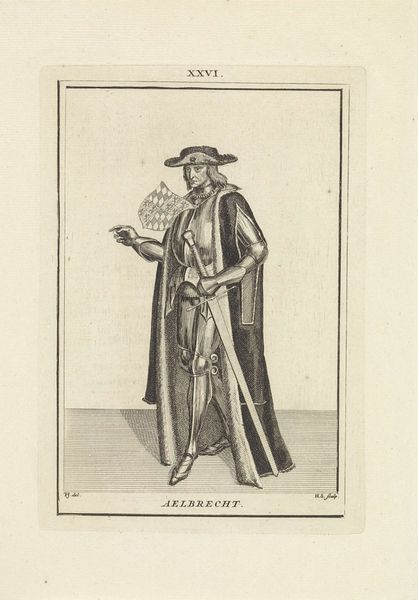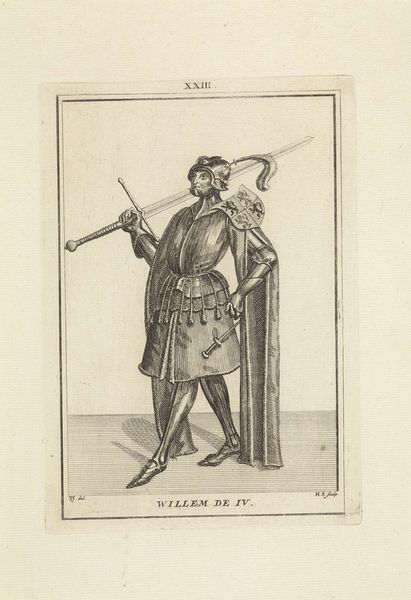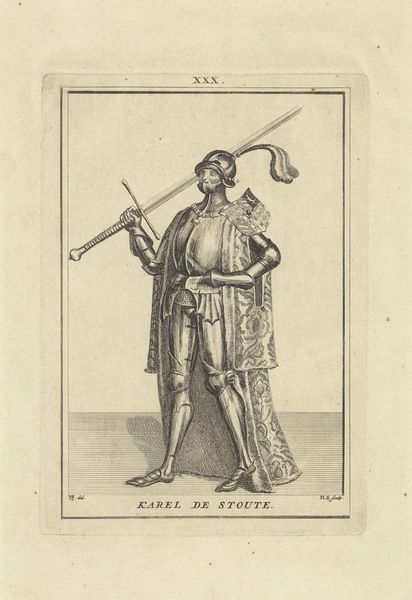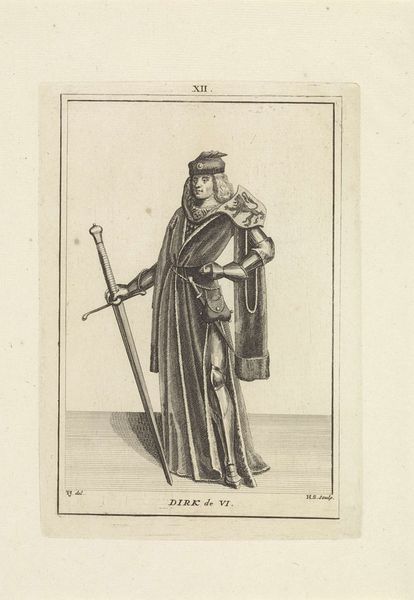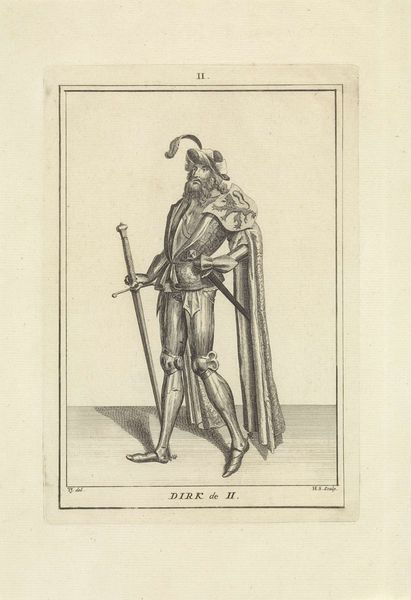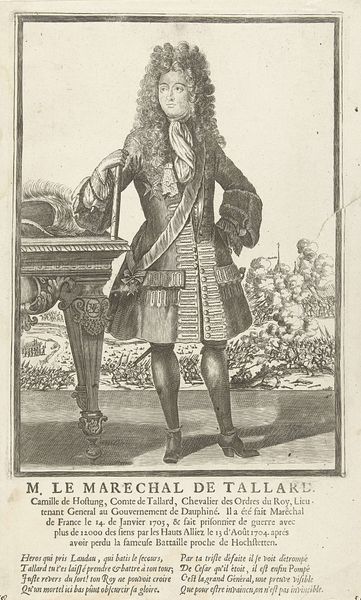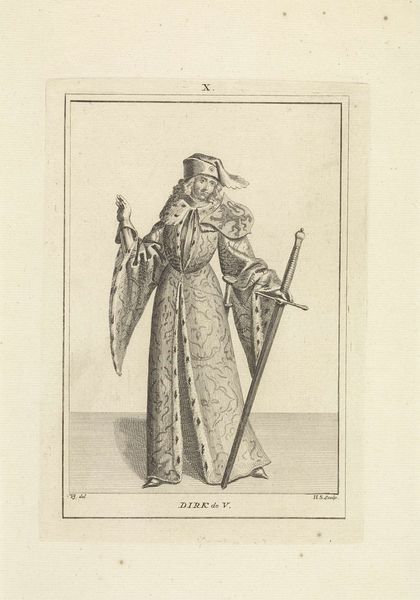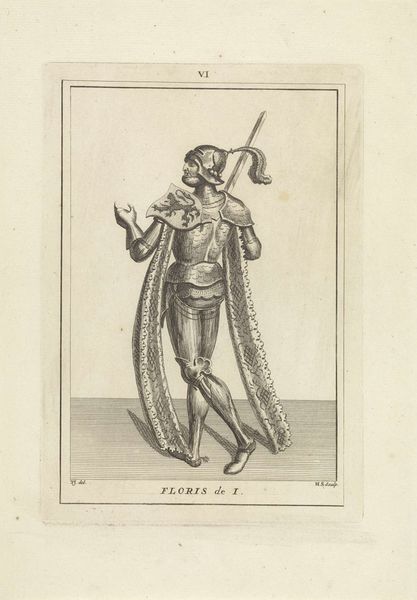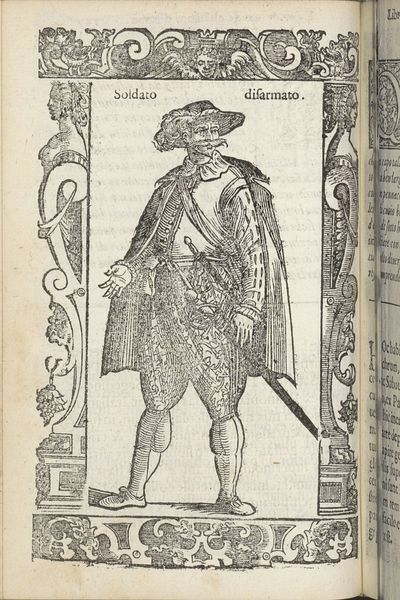
Portret van Robrecht I de Fries, graaf van Vlaanderen en Holland 1745
0:00
0:00
hendrikspilman
Rijksmuseum
print, engraving
#
portrait
# print
#
history-painting
#
academic-art
#
engraving
Dimensions: height 192 mm, width 135 mm
Copyright: Rijks Museum: Open Domain
Editor: Here we have Hendrik Spilman’s 1745 print, “Portret van Robrecht I de Fries, graaf van Vlaanderen en Holland,” currently at the Rijksmuseum. It depicts Count Robert I. It has a very stately feel to it; it is hard to miss the many visual signifiers that highlight nobility and royalty. What stands out to you? Curator: Indeed, it’s a potent image, isn't it? What strikes me immediately is not necessarily the individual portrayed, but the system this print actively reinforces. Consider how easily reproduced prints like this circulated; shaping perceptions of power and legitimacy within the Dutch Republic. Who do you think this print was created for and what was its message? Editor: Well, given the title, it would be safe to assume the artwork's primary audience might have included nobles. So, what was the message here, besides showcasing authority? Curator: That's astute. Think about the details, the weaponry, the regalia. These aren't just symbols of individual power, they represent the weight of history, lineage, and divine right. Reproducing images like these reinforced existing hierarchies at a time of emerging societal challenges. Could this image, in its own way, act as an effort to legitimize a current ruler by association? Editor: Interesting! I hadn't thought about it that way. It's not just a portrait, but a political statement using history to prop up the present. I see it as being like early propaganda! Curator: Precisely! Visual culture, especially portraiture, has long been instrumental in crafting and solidifying narratives of authority. Reflect on the implications of widespread access to these types of images and how that can manipulate views of a society’s culture. Editor: That definitely provides an insightful framework, helping to understand art’s crucial function in disseminating ideals within a larger societal context. Curator: Exactly. Art serves not merely as decoration but reflects a complex history of cultural interactions.
Comments
No comments
Be the first to comment and join the conversation on the ultimate creative platform.
